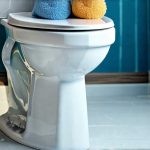Frequent bathroom trips can be disruptive to daily life, impacting productivity, sleep, and even social activities. It’s a surprisingly common concern, often stemming not from underlying medical issues (though those should always be ruled out by a healthcare professional) but from habits and routines that inadvertently contribute to increased urination or bowel movements. Many individuals assume constant trips to the restroom are simply part of their constitution, accepting it as an unavoidable reality. However, understanding how daily behaviors influence bladder and bowel function can empower us to make adjustments leading to more comfortable and convenient lives. This isn’t about eliminating necessary bodily functions; it’s about optimizing them for greater control and lessening unwanted urgency or frequency.
The key lies in recognizing the interconnectedness of lifestyle factors – from hydration strategies and dietary choices to physical activity levels and even stress management techniques. A holistic approach, focusing on building sustainable routines rather than quick fixes, is far more effective long-term. It’s crucial to remember that everyone’s body is different, and what works for one person might not work for another. Experimentation and mindful observation are essential components of finding a personalized strategy that addresses the root causes of frequent bathroom use while promoting overall well-being. This article will explore actionable routines designed to minimize unnecessary trips, restoring a sense of control and freedom in your daily life.
Hydration Strategies for Bladder & Bowel Health
Proper hydration is fundamental to health, but how we hydrate often matters more than how much we drink. Many people operate under the assumption that eight glasses of water per day is universally ideal, but this isn’t always true. Individual needs vary significantly based on activity level, climate, and overall health status. The goal isn’t just to meet a specific number; it’s to distribute fluid intake strategically throughout the day and avoid large boluses of liquid that overwhelm the bladder. Sipping water consistently is far more beneficial than chugging entire bottles at once.
Consider timing your hydration around activities. For example, reduce fluid intake in the two to three hours before bedtime to minimize nighttime awakenings. Similarly, if you know a long meeting or travel period is coming up, moderate your fluid consumption beforehand to avoid urgency during those times. Pay attention to what you’re drinking too. Caffeinated beverages and alcohol are known diuretics, meaning they increase urine production. While not necessarily eliminating them entirely, be mindful of their impact and adjust your water intake accordingly. Electrolyte-rich drinks can also be helpful, particularly after exercise or in hot weather, as they help maintain fluid balance within the body.
A good way to assess if you’re adequately hydrated is to check the color of your urine. Pale yellow indicates sufficient hydration, while dark yellow suggests you need to drink more. Remember that certain medications and foods can also affect urine color, so consider these factors when evaluating your hydration status. Ultimately, listening to your body’s cues – thirst signals are a reliable indicator – and adapting your fluid intake based on individual needs is the most effective approach.
Dietary Adjustments for Reduced Urgency
What we eat significantly influences both bladder and bowel function. Certain foods can irritate the bladder, leading to increased urgency and frequency. Common culprits include spicy foods, citrus fruits and juices, tomatoes, chocolate, artificial sweeteners, and carbonated beverages. Identifying personal triggers is key – keeping a food diary to track symptoms alongside dietary intake can be incredibly helpful in pinpointing specific sensitivities. It’s not always about eliminating these foods entirely; it might simply involve reducing portion sizes or consuming them less frequently.
Fiber plays a crucial role in regulating bowel movements and preventing constipation, which can contribute to increased bathroom trips. Aim for a diet rich in fiber-rich foods like fruits, vegetables, whole grains, and legumes. Gradual increases in fiber intake are recommended to avoid bloating and discomfort. Adequate fluid intake is also essential when increasing fiber consumption, as it helps soften stool and facilitates easier passage.
Beyond specific food choices, meal timing can impact bowel regularity. Establishing a consistent schedule for meals – eating around the same times each day – can help regulate digestive processes. Avoid large, heavy meals right before bedtime, as they can disrupt sleep and potentially lead to nighttime bathroom trips. Incorporating probiotic-rich foods like yogurt or kefir into your diet may also benefit gut health and bowel function.
Pelvic Floor Exercises & Strengthening
A strong pelvic floor is essential for bladder and bowel control. These muscles support the organs in the pelvic region, helping to prevent leakage and reduce urgency. Pelvic floor exercises, often referred to as Kegels, can be incorporated into daily routines relatively easily. To perform a Kegel correctly:
1. Identify the muscles you use to stop the flow of urine midstream (though avoid doing this regularly as it can create unhealthy habits).
2. Contract those muscles for 3-5 seconds.
3. Relax for 3-5 seconds.
4. Repeat 10-15 times, several times a day.
Consistency is key – regular practice over time will yield the best results. There are many resources available online and through healthcare professionals to ensure proper technique. It’s important to engage only the pelvic floor muscles during Kegels; avoid tightening your abdominal muscles, buttocks, or thighs.
Beyond Kegels, other exercises that strengthen core muscles can also indirectly support pelvic floor function. Pilates and yoga, for example, often incorporate movements that engage the core and improve overall stability. However, be mindful of high-impact activities or heavy lifting, which can put excessive strain on the pelvic floor if not performed correctly. Consulting with a physical therapist specializing in pelvic health can provide personalized guidance and ensure you’re performing exercises safely and effectively.
It’s important to note that strengthening the pelvic floor is not a quick fix; it requires consistent effort and patience. However, over time, a stronger pelvic floor can significantly improve bladder and bowel control, reducing frequency and urgency and enhancing overall quality of life.





















